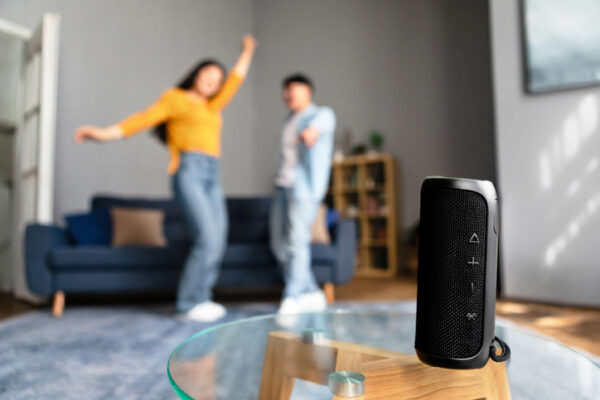Author: Victor Texcucano, Content Coordinator, RAB
We are well into the 21st century, and the technology available for consumers to place in their homes is proof of that. Whether it’s smart thermostats you can control with a smartphone or a smart speaker that allows for control of all the lights of your home, the smart home technology available today is exactly what was presented in old sci-fi movies and novels.
Smart devices are household electronics that can be controlled using an internet connection. These devices offer a vast technological advantage to their nonsmart counterparts.
It used to be that only smartphones and computers could work with the internet. These days, TVs, dishwashers, security alarms, light bulbs and countless other items can be controlled all within the same home network – meaning they can be controlled using a smartphone, which Consumer Affairs say more than 91% of Americans own as of 2025. It’s possible to operate smart devices remotely or even set daily routines (like scheduling lights in your bedroom to turn on daily at 7 a.m., for example).
These devices make everyday living more convenient, making them very attractive to consumers. In a survey by Deloitte, 77% of consumers who have embraced smart home devices believe that these technologies improve their overall quality of life.
Perhaps that is why there is such consumer interest in these devices. Forty-five percent of U.S. internet households had at least one smart home device with 18% having six or more in 2024, per Parks Associates’ Smart Home Dashboard.
When it comes to consumer purchase decisions, performance, convenience, energy savings and sustainability are among the highest drivers, per Nielsen IQ. Smart home products deliver on all of these attributes. Mirroring the interest and growth of sales devices, consumers are willing to pay more, especially for major domestic appliances. According to Nielsen IQ data, 38% of consumers are willing to pay more for smart variants of domestic appliances. This is a great sales opportunity for retailers of these goods, considering the additional $300 cost of domestic appliances, on average, compared to their nonsmart version.
Broadcast radio is a great way to reach shoppers interested in smart home devices, because radio reaches them during their busy days – on the go, while at work or in the car.
According to MRI-Simmons data, 60% of consumers who said they are willing to pay more for top-quality electronics listen to broadcast radio. Perhaps one of the reasons why radio listeners are willing to pay more is because of the benefit that technology delivers. Reflective of the Deloitte survey, MRI-Simmons data also shows 71% of radio listeners believe that technology helps to get their lives more organized. These insights are important for tech companies and tech retailers to understand and should communicate the potential benefits of consumers living in smart homes.
Smart speakers, for example, can be used to pair with other smart tech, like lightbulbs or even certain household appliances. Six in ten consumers that have used their smart speakers to control other smart devices in their home also listen to AM and FM radio, per MRI-Simmons. Smart speakers can also be used to get weather, local news and even hear scores from last night’s baseball game. Sixty-two percent of consumers who have used their smart speakers to get updates are also radio listeners. Proving that radio listeners tune into radio across platforms and devices, 78% of those adults who listened to live AM/FM radio via a smart speaker are broadcast radio listeners. As we have stated before, it is about the content and connection that people have with their radio stations. They will seek out that content across available devices and platforms. This is a great opportunity for advertisers to connect with potential customers (aka radio listeners).
Connecting and targeting consumers when you consider the amount of messaging they are exposed to daily. Reaching them with radio is easy and a smart thing to do. Why? Radio content is available on all smart devices – even smart refrigerators. Consumers appreciate the organization and ease of use of smart devices in their daily lives just as much as they appreciate the connection they have with their local radio station. Just ask any smart device and they will tell you.


